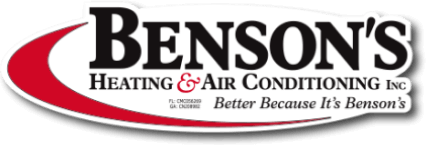
PROTECT YOUR FAMILY FROM CARBON MONOXIDE
Carbon monoxide (CO) is a colorless, odorless, tasteless gas that is produced by the incomplete combustion of fuels such as wood, natural gas, gasoline, diesel, kerosene, coal and charcoal. It is caused by lack of oxygen or a disruption in the burning process.
Household appliances such as your furnace, water heater, stove, space heaters, charcoal grill and gas dryer can be sources of carbon monoxide, especially if they are not in good working condition or have been installed improperly. Vehicle exhaust fumes from attached garages, as well as improperly operating fireplaces, also can become carbon monoxide hazards, particularly if your home is well-sealed for energy efficiency.
Carbon monoxide can be an invisible threat to your family’s health and safety. Though more commonly associated with fires and automobile emissions, carbon monoxide poisoning can accumulate in any home unless certain precautions are taken.
Home heating systems represent only 5% of potential carbon monoxide sources. Though the amount of carbon monoxide produced is not substantial, it is important to schedule annual maintenance visits by a qualified technician to make sure all combustion appliances are operating properly and all chimneys and vents are free from obstruction.
What can be done about detecting carbon monoxide in the home?
The best method of detection is to use a carbon monoxide detector in your home. A carbon monoxide detector is a device very similar to a smoke alarm. It monitors the air for carbon monoxide and sounds an alarm if a specific level is detected. Ideally, you should have one detector adjacent to every living area in your home.
Carbon monoxide detectors are most effective when used in combination with a Energy Savings Agreement For more information on how to schedule regular maintenance for your furnace or about purchasing a carbon monoxide detector, just give us a call or visit our website www.bensonshvac.com to place your next visit.
What are some of the symptoms of carbon monoxide poisoning?
Unfortunately, the symptoms are easily overlooked because they are often flu-like. With mild exposure, most people experience headaches, fatigue and nausea. Medium exposure can cause a severe throbbing headache, drowsiness, disorientation, confusion and an accelerated heart rate. Extreme exposure can lead to unconsciousness, convulsions, cardiorespiratory failure, coma and possibly death.
What can be done to protect our home from the dangers of carbon monoxide?
There are several measures you can take to reduce your risk of carbon monoxide poisoning. Because vehicles are a major cause of carbon monoxide poisoning, always back your car out of the garage to let it warm up. Never leave it running in the confined space of a garage, particularly if the garage is attached to the home. The same holds true for lawn mowers. Never use ovens or grills for heating devices.
Home heating systems represent only 5% of potential carbon monoxide sources. Though the amount of carbon monoxide produced is not substantial, it is important to schedule annual maintenance visits by your qualified Bensons technician to make sure all combustion appliances are operating properly and all chimneys and vents are free from obstruction.





